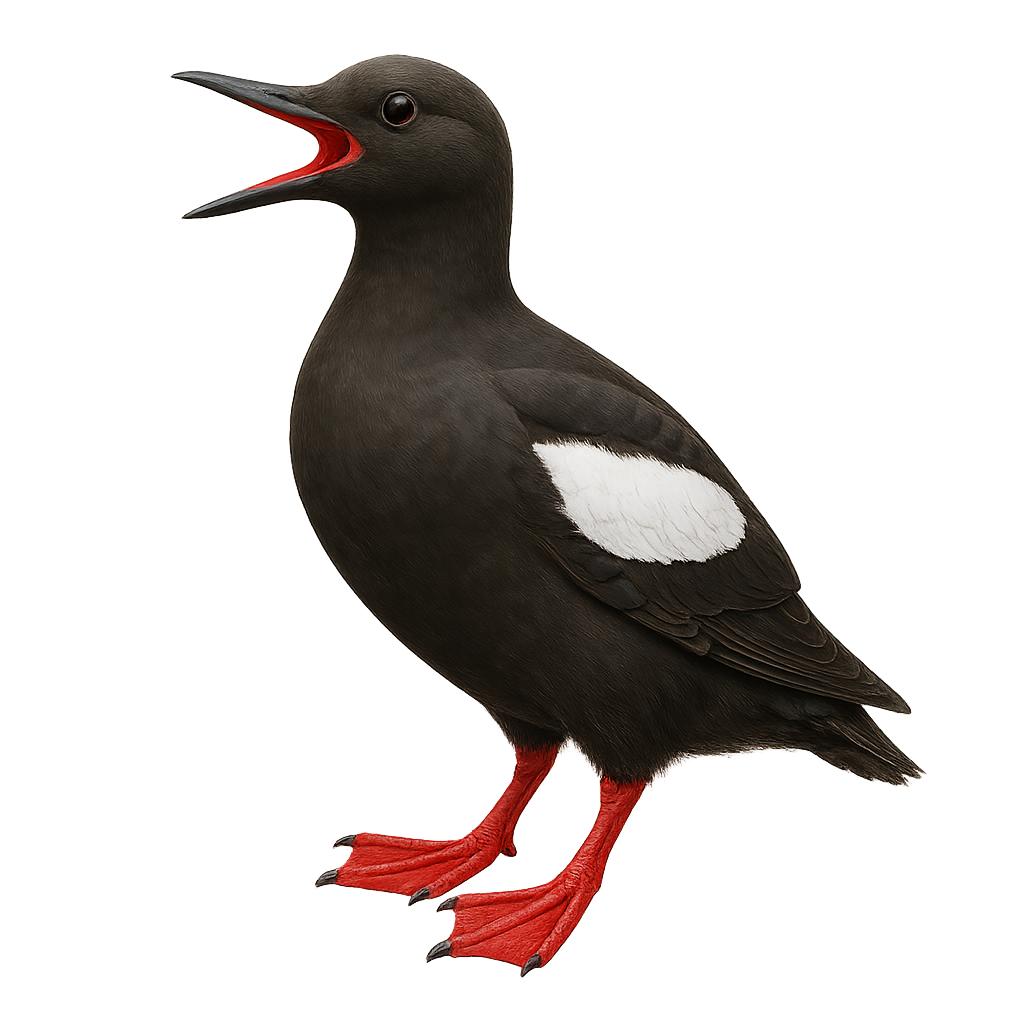Your wildlife photography guide.
Explore the pigeon guillemot in detail, study its behavior, prepare your shots.
Where to observe and photograph the pigeon guillemot in the wild
Learn where and when to spot the pigeon guillemot in the wild, how to identify the species based on distinctive features, and what natural environments it inhabits. The WildlifePhotographer app offers tailored photography tips that reflect the pigeon guillemot’s behavior, helping you capture better wildlife images. Explore the full species profile for key information including description, habitat, active periods, and approach techniques.
Pigeon Guillemot
Scientific name: Cepphus columba

IUCN Status: Least Concern
Family: ALCIDAE
Group: Birds
Sensitivity to human approach: Suspicious
Minimum approach distance: 10 m
Courtship display: May to June
Incubation: 30-33 jours
Hatchings: June to August
Habitat:
Rocky coasts, cliffs, marine islands
Activity period :
Primarily active during the day, with peak activity in the morning and late afternoon.
Identification and description:
The Pigeon Guillemot, Cepphus columba, is a medium-sized seabird belonging to the Alcidae family. It is primarily black with distinctive white wing patches and red legs. Its slender, pointed bill is adapted for catching small fish and marine invertebrates. Found mainly along the rocky coasts of the North Pacific, from Alaska to California, it is known for its impressive diving abilities, reaching significant depths to hunt its prey. During the breeding season, it nests in rocky crevices, often in scattered colonies. The Pigeon Guillemot is a resilient bird, well-adapted to its marine environment, but remains sensitive to human disturbances and environmental changes.
Recommended lens:
400mm – adjust based on distance, desired framing (portrait or habitat), and approach conditions.
Photography tips:
To photograph the Pigeon Guillemot, it is advisable to use a telephoto lens of at least 400mm to capture detailed images without disturbing the bird. Opt for early morning or late afternoon hours when the light is soft, highlighting the contrasts of its black and white plumage. Be patient and discreet, positioning yourself at a safe distance of at least 10 meters to avoid disturbing it. Rocky coasts often provide great opportunities to capture dynamic diving or flying scenes.
The WildlifePhotographer App is coming soon!
Be the first to explore the best nature spots, track rutting seasons, log your observations, and observe more wildlife.
Already 1 430 wildlife lovers subscribed worldwide

